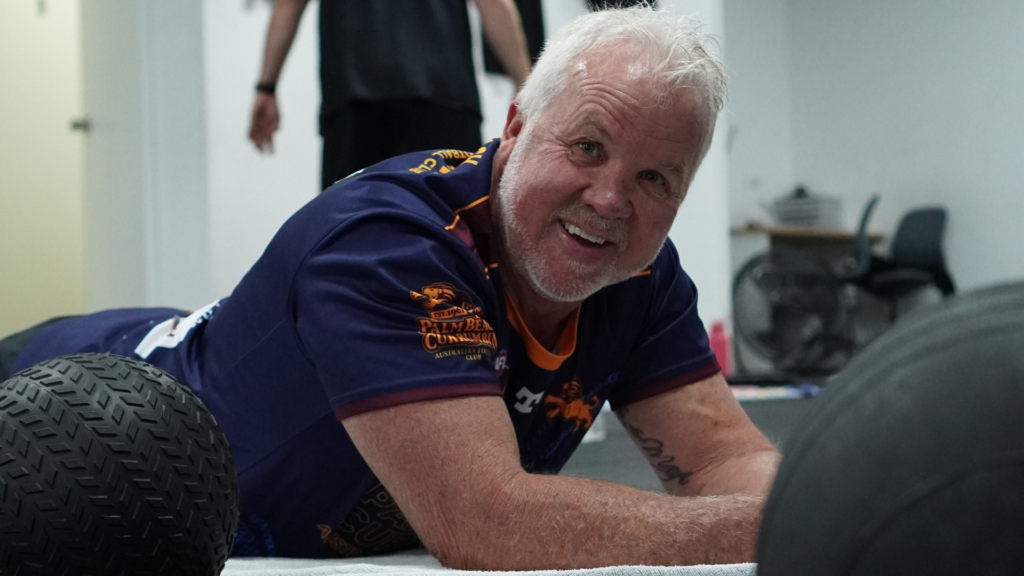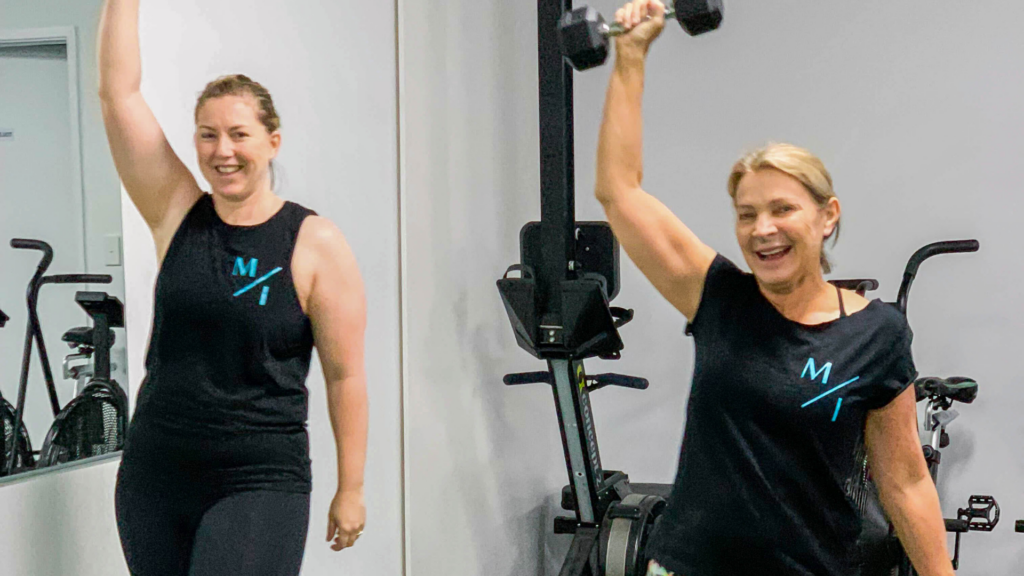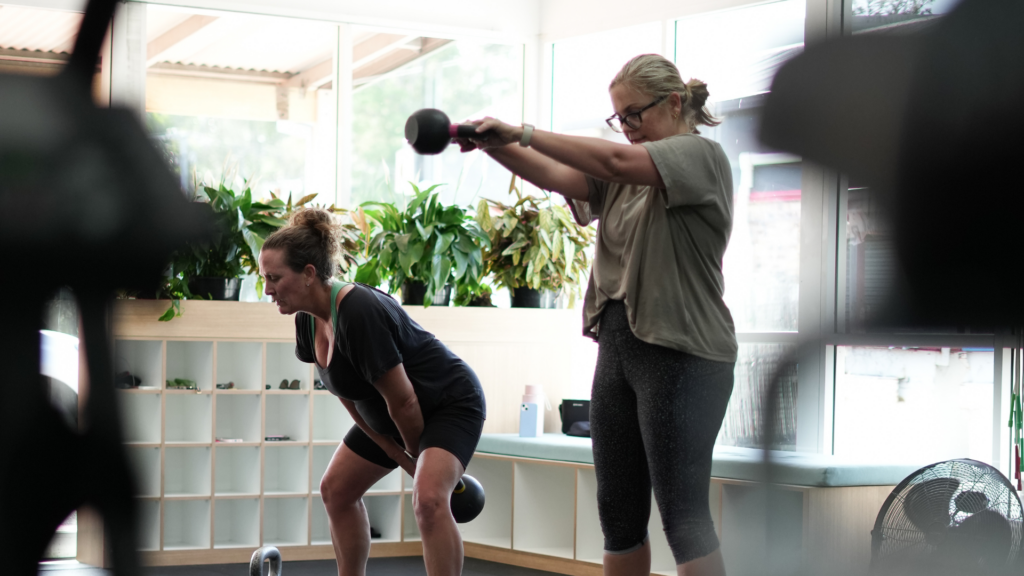If you’re in your 40s, 50s, or 60s, and finding yourself out of breath during a brisk walk or barely able to finish a few squats, you’re not alone.
It’s easy to assume that as we get older, these things are just a part of the aging process, but that doesn’t mean they have to be. Lack of strength and endurance is a common issue many people face as they get older, but the good news is, it’s something that can be improved with the right approach.
Let’s break down why this happens, what it means for your body, and, most importantly, how you can start building strength and endurance in a way that suits your needs and goals.

Why Do You Feel Weak?
It’s frustrating to feel like you’ve lost your strength, especially when you used to be able to lift heavier weights or walk longer distances. As we age, our muscles naturally lose mass and function. This is due to a combination of reduced physical activity, changes in our hormones, and the way our body’s metabolism slows down.
It’s not just about looking strong; it’s about how your muscles help you do everyday things. Whether it’s carrying groceries, playing with your grandkids, or just getting up from the couch, your muscles and joints are constantly working to help you move. When your strength begins to decline, even these small tasks can feel like a struggle.
This muscle loss doesn’t happen overnight. It’s gradual, which means you might not notice the decline right away. But once you start feeling weaker or more winded than usual, it’s time to pay attention.
Why Does Endurance Fade?
Endurance is your ability to sustain physical activity over a longer period. Whether it’s a 10-minute walk, a 30-minute bike ride, or even a few sets of exercises, endurance is something that can gradually decrease if you’re not actively working to maintain or improve it.
Just like strength, endurance decreases as we age. The efficiency of your cardiovascular system tends to decline, meaning your heart and lungs don’t work as efficiently as they did in your younger years. The muscles that support your stamina also begin to weaken, which makes everything feel harder. It’s the reason you may find yourself out of breath after a short walk or tired faster during your workouts. But again, there’s good news: endurance can be built, no matter your age.
Is It Just Age, or Can You Improve It?
The key takeaway here is that while aging does play a role, the decline in strength and endurance doesn’t have to be inevitable. It’s not about fighting aging; it’s about understanding your body and giving it the tools it needs to perform better.
Think of it like maintaining a car. Over time, things wear out, and the car might not run as smoothly, but with regular maintenance, you can keep it running efficiently for much longer. The same goes for your body. Regular exercise, good nutrition, and proper rest are like the oil change, tire rotation, and cleaning that help keep your body running well.
The fact is, there’s a lot you can do to improve your strength and endurance. You might not be able to go back to your 30-year-old self, but you can certainly get better than you were yesterday.

How to Build Strength and Endurance at Any Age
You’re not stuck with the body you have now, but you need to be strategic about how you work to change it. The process of building strength and endurance doesn’t require hours in the gym or extreme diets; it’s about consistency, finding a routine that works for you, and making small adjustments over time.
Here’s a look at how you can start working on both strength and endurance.
1. Start with Mobility and Flexibility
Before you even think about lifting weights or running laps, it’s important to make sure your body is mobile and flexible enough to handle more challenging exercises. If you’re stiff and tight, you’re going to struggle with more complex movements. Stretching and mobility exercises like yoga or Pilates are great for increasing flexibility and reducing muscle tightness, which will help when you start increasing your strength and endurance.
Start by incorporating basic stretches and mobility drills into your daily routine. Focus on areas like your hips, lower back, and shoulders, which tend to tighten as we age.
2. Strength Training Basics
When it comes to strength, many people mistakenly believe that lifting heavy weights is the only way to build muscle. However, you can gain strength without lifting heavy loads. Bodyweight exercises like squats, lunges, push-ups, and planks can be incredibly effective for building functional strength. These exercises use your own body as resistance, which is perfect for those who may be intimidated by weights or feel like they’re not in good enough shape to start.
Here are some strength training exercises to get you started:
- Squats: Start with bodyweight squats. As you get stronger, you can add resistance with dumbbells or kettlebells.
- Push-ups: If full push-ups are too difficult, modify them by doing knee push-ups or wall push-ups.
- Lunges: Bodyweight lunges are a great way to work your legs and improve balance.
- Planks: Planks strengthen your core, which is essential for overall stability.
Focus on form rather than intensity, especially in the beginning. Start with lighter resistance and gradually increase the weight or reps as you get stronger. Aim for two to three strength training sessions per week, with at least one rest day in between.
3. Build Cardiovascular Endurance Gradually
When it comes to building endurance, the key is to start slowly and build over time. Endurance exercises like walking, cycling, or swimming are great for your cardiovascular system and can be done at a pace that works for you.
If you’re new to exercise or haven’t been active in a while, start with short walks or light cycling sessions. Over time, you can increase the duration and intensity. For example, begin with 10-15 minutes of brisk walking and gradually work up to 30-45 minutes. Adding a few short bursts of speed or incline can also help improve your stamina.
The goal isn’t to push yourself until you’re exhausted but to gradually increase your ability to sustain physical activity over time.
4. Consistency, Consistency &… Consistency
When it comes to building strength and endurance, the most important thing is consistency. You don’t need to go all-out every day. In fact, overtraining can lead to injury and burnout, especially if your body isn’t used to exercise. Instead, aim for steady, consistent progress. This means working out regularly, but also allowing your body time to recover.
Aim for 3-4 days of exercise per week, including a mix of strength and endurance workouts. This balance will help you improve both areas without overloading your system.
5. Nutrition for Strength and Endurance
Strength and endurance aren’t just built in the gym. Nutrition plays a big role in how well your body performs. To build muscle, your body needs adequate protein, and to improve endurance, you need a good mix of carbohydrates, fats, and proteins to fuel your workouts.
Here are a few nutritional tips:
- Protein: Aim for lean protein sources like chicken, fish, tofu, or legumes to help with muscle recovery and growth.
- Carbohydrates: Whole grains, fruits, and vegetables are excellent sources of carbs that will provide you with energy for your workouts.
- Healthy Fats: Incorporate healthy fats from sources like avocado, nuts, and olive oil to support overall health.
Drink plenty of water throughout the day, especially before and after workouts, to stay hydrated and aid in muscle recovery.
6. Listen to Your Body
As you start to improve your strength and endurance, it’s crucial to listen to your body. Pushing too hard, too fast can lead to injury. If you feel pain (not the good “workout” kind of pain, but sharp or persistent discomfort), stop and reassess. You might need to adjust your form, reduce intensity, or give yourself more time to recover.
7. Include Rest and Recovery Days
Recovery is just as important as the workout itself. Your muscles need time to repair and rebuild after strength training, and your cardiovascular system needs time to adapt to endurance exercises. Taking proper rest days allows your body to rebuild itself stronger than before.
Make sure you’re giving yourself at least one full rest day between strength workouts. Incorporate activities like walking, stretching, or yoga on these days to keep your body moving without stressing it too much.
8. Set Realistic Goals
Building strength and endurance takes time, and it’s easy to become discouraged if you don’t see immediate results. Set small, realistic goals for yourself and celebrate the progress you make. For example, aim to increase your walking distance by 5 minutes each week or add one more rep to your squats every few days. These small victories add up, and over time, they’ll lead to significant improvements.

What it really comes down to…
It’s easy to feel like your best days are behind you when it comes to strength and endurance. The truth is, improvement is always within reach, no matter when you decide to begin. By taking small, consistent steps, you can regain lost strength and stamina, improve your overall health, and enjoy an active lifestyle. Don’t get discouraged by how far you feel you have to go, focus on the progress you make along the way.
Remember, it’s about doing what works for you and finding the right balance between strength training, cardiovascular work, flexibility, and recovery. Stick with it, and before you know it, you’ll be feeling stronger, more energised, and ready to take on new challenges.
If you’re not sure where to start, don’t hesitate to reach out for guidance. Whether it’s working with a coach or just figuring out your next steps, you don’t have to do it alone. The important thing is to keep moving, even in small ways. If you’re in the Burleigh area, feel free to drop by and see how we can help.
Written by Luke Nivison-Smith, founder of Movement Innovation, with 13 years of experience as a personal trainer.
